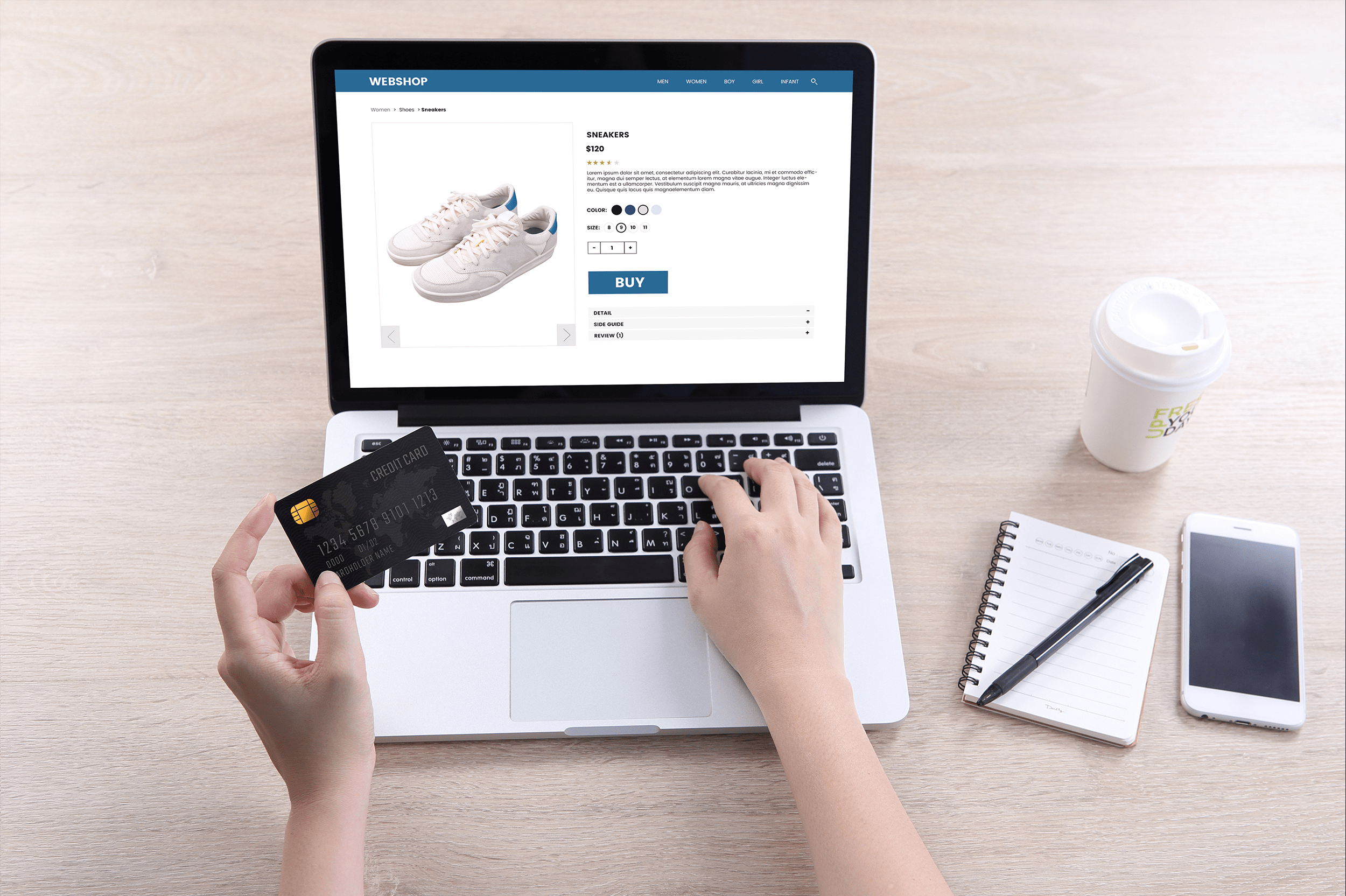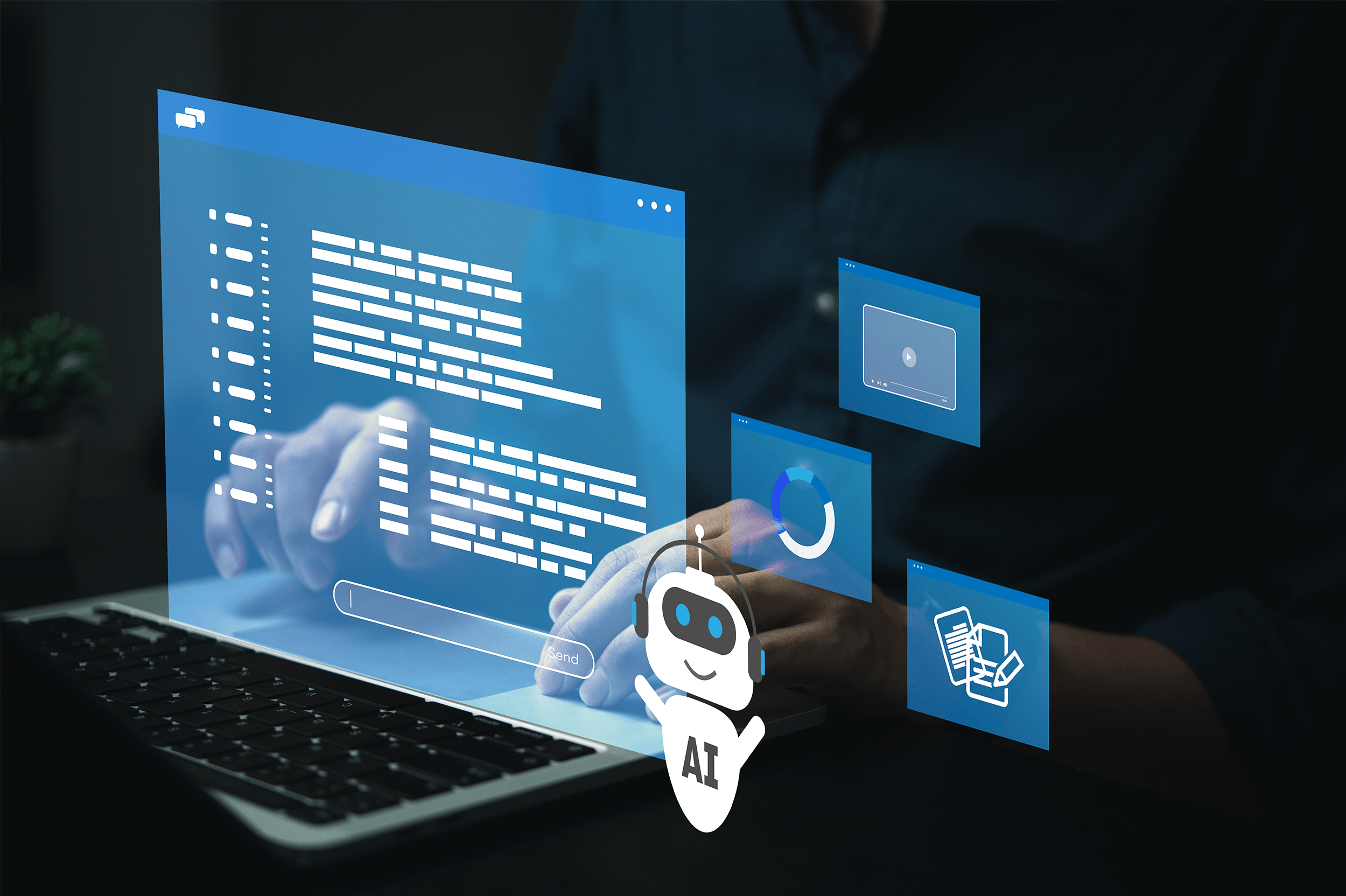Chatbots have become an essential marketing and customer service tool for businesses of all sizes. With a variety of easy-to-use chatbot platforms and tools available, practically any business can get started with chatbots easily and without a significant investment in custom application development. While contact forms have their place, chatbots provide a way for your audience to engage with your company quickly and receive an immediate response to pressing questions and concerns, which can help to reduce customer churn and even improve customer acquisition.
With various types of chatbots to choose from and a multitude of tools that can help you build and manage chatbots, getting started can be overwhelming. To help you get up and running with an effective chatbot that meets your company’s (and your customers’) needs, we reached out to a panel of marketing professionals and chatbot experts and asked them to answer this question:
“What’s the most important thing for companies to consider when getting started with chatbots?”
Meet Our Panel of Marketing Professionals & Chatbot Experts:
Brian Donovan
Brian is the CEO of Timeshatter.
“If you are looking for a good chatbot agency but don’t know what to look for, see what agencies that businesses similar to yours are using. You also want to look for one that has a lot of feature options. When designing your chatbot, make sure to have your customers’ needs and goals in mind. If there are common questions or inquiries, make sure that it is designed to effectively answer them.
People who use chatbots want efficiency. They want their question answered or issue resolved quickly, so make sure that your chatbot is concise, easy to understand, and fast.”
Andre Kazi
Andre is the CEO of Improovy, a nationwide provider of on-demand interior and exterior home painting services.
“Your chatbots should be designed to answer ANY question a customer may have. Customer frustration will ensue if they spend too much time on a chatbot only to have to speak to a live person since their question wasn’t answered. Because of this, it’s important to think of all potential inquiries you might get and have the best (and most concise) responses. I would also recommend trying it out when you implement one so that you get a first-hand look into the customer experience and can make any necessary changes.”
Nikki Gonzales
Nikki Gonzales is currently the Head of Growth and Partnerships at Quotebeam – the marketplace for automation parts, quotes, and collaboration. Her love of problem-solving and building things led to a career in sales engineering spanning multiple technologies such as Machine Vision, Mechatronics, Computational Electromagnetics, Data Analytics, and Artificial Intelligence, to name a few.
“The most important thing to do when starting out with chatbots is to make an SOP (standard operating procedure), job description document, or CX map (depending on the type of bot and if it is internal or customer-facing). After implementing chatbots in several B2B use cases, from sales and marketing to inventory management and self-serve data analytics, my best advice is to start with the goal, then map out the experience the chatbot needs to provide, interview users, and iterate based on feedback.
Using design thinking as a methodology makes it much easier to find the right flow and provide a good user experience with a chatbot that can ultimately become a huge asset to your business. Like any human employee, it can take some time to get a chatbot properly trained and fully functional in its role.”
Christian Adams
Christian Adams is the Co-Founder & Managing Editor at Coffee-Affection.
“The first thing to do when you’re getting started with a chatbot is to brainstorm a list of frequently asked questions your customer base may have. Then, write out natural-sounding conversation flows that answer these questions. Even if you don’t end up using these message flows, it helps to understand the process of the messaging for when you get closer to launching your chatbot.”
Tyler Garns
Tyler Garns is the Founder and CEO at Box Out Marketing, a company that offers strategic coaching and campaign implementation services. He is an international speaker, marketer, trainer, and entrepreneur specializing in marketing and automation.
“From my experience, the use of chatbots has massively improved customer service. However, to ensure your chatbot’s effectiveness, you must have a clear and specific goal in place. Since your chatbots are the frontline of your company, they must be in line with your company’s brand image to ensure that there is no confusion among users. It’s best to have a test run before completely launching a chatbot to your website to check for errors and weak points so that it works perfectly when deployed.”
Avinash Chandra
Avinash Chandra is a Mentor, Advisor, Consultant, and Business Strategist.
“You should give your chatbot a unique name so that people will remember it. You should also ensure the conversation is natural. Let your chatbot handle small and simple tasks first, such as addressing queries, product descriptions, feedback, and getting customers’ info. However, you need to evaluate and optimize your chatbot regularly to know it’s functioning correctly. Most importantly, stay updated with what your competitors are doing.”
William Cannon
Will Cannon is the CEO of Signaturely, a digital signature platform.
“Business owners, support, and marketing individuals should never cross the line between live chat and chatbots. This is a delicate balance that needs to be maintained for a successful chatbot implementation.
To achieve the highest excellence in customer support and service, it’s important to define a time at which a human chat should take over from the chatbot. Complete automation isn’t suitable since not all queries can be convincingly answered by a chatbot – plus, not all people like to talk with one.
Chatbots can be best used as an essential screening tool for genuine queries. Once a user gets beyond the assistance the chatbot can provide, it means the user has a genuine issue that requires human assistance. That’s how we use chatbots in our customer support and service functions.”
Simon Elkjær
Simon Elkjær is the Chief Marketing Officer of avXperten, home of Denmark’s most affordable electronics. He has more than a decade’s worth of experience in e-commerce, marketing, and entrepreneurship.
“One of the reasons some chatbots fail is because they seem too disconnected and formal to customers. Though it’s great that chatbots are quick and informational, not giving your chatbots a little warmth can make your goal of a personalized experience a little harder to achieve. This is why it’s important for you to make sure that your chatbot interacts and engages with your customers in order to connect with them. Personalizing the chatbot experience and giving it a warm tone along with its responsible use will definitely help improve your company’s customer service efforts.”
Nathan Hughes
Nathan Hughes is a Digital Marketing and SEO Manager at Diggity Marketing.
“Although there are several advantages of using chatbots, there are some challenges of implementing chatbots as well. Therefore, companies must ensure they are ready to deal with them. The following should be taken into account when getting started with chatbots:
- The security of the chatbot should be prioritized. End-to-end encryption, authentication timeouts, etc., should be checked regularly. If the company is using a SaaS provider for the chatbot, the security measures should be upheld. API security testing and penetration tests should be performed to ensure that customer and company data are safe.
- Before getting started with the chatbot, it is important to notify employees that a chatbot is being implemented. As this is going to directly impact the customer service personnel, if some technical skills are needed, it is better to train them before starting to use the chatbot.
- The company should ensure that the chatbot is actually able to provide relevant, helpful responses to customers. The chatbot needs to be liked by customers; otherwise, it’s a huge fail on the company’s end. The key elements to be considered include functionality, usability, and accuracy. Depending on the size of the business and customer demand, companies can decide between custom chatbots and no-code chatbots.
- AI chatbots are improving customer service. If a company can make an AI chatbot, it surely will be able to stand apart from its competition. Building an intelligent chatbot could improve the efficiency and customer experience since the chatbot will be able to handle most of the customer queries. This means that employees can focus more on the ‘actual’ work than spending time replying to repetitive questions. Also, having an AI chatbot will decrease the response time, thereby improving customer satisfaction. An AI chatbot should be able to seamlessly hand over the conversation to an agent when needed and must have the ability for contextual understanding.”
Martin Brown
Martin Brown is the General Manager of FM Outsource.
“Our top tip is to choose a Natural Language Processor (NLP) engine which is capable of machine learning and ensure it is integrated into your contact center correctly. An NLP is what affects a bot’s ability to derive meaning from human language. There’s a lot of NLP software suppliers you can work with, so the difficulty is making sure you pick the best NLP for your bots and business.
You have to consider how to make a chatbot learn from customers’ messages, rather than simply understanding them. People use language in different ways, and your chatbot will need to be able to decipher unique queries.
While you won’t need a team of developers to create your NLP, you will need an implementation team to teach it the intent behind phrases specific to your business. For example, if your small business sells big-name items, you’ll need to teach it to recognize the brand name as well as any colloquial terms for the brand (e.g., ‘JD’ as opposed to ‘Jack Daniels’) and the product the brand name is applied to (‘whiskey’).
Once your bot understands what a customer is asking for, it’s going to need to find an answer. For a bot to be able to independently find answers for customers, you’ll need to connect your NLP to the relevant software with application programming interfaces (APIs – strings of code that enable two pieces of software to interact). What do we mean by relevant software? That will be unique to your business, but it generally includes any software that contains customer account or order details. For example, if you’re an online retailer, this will include an order management system and delivery management system.
This is the difference between a bot that sends generic stock answers and a bot that can send personalized messages that reflect an order’s latest update. We know which response we’d prefer to receive.”
Brian Turner
Brian Turner is the Chief Technology Officer at ConvertBinary.
“When making chatbots, the most important consideration is for companies to make an information flowchart to guide the user through. A chatbot is only as powerful as the information it can share with each user. When people interact with your chatbot, they’re usually looking for guidance in solving a problem that they’re dealing with. If your chatbot is not prepared to address these concerns, it’s likely to frustrate your clientele more than anything else.
Fortunately, chatbots are a potent tool when used correctly. They enable you to free up internal resources and offer support to customers without addressing each and every concern manually. To do so, you must make sure to prepare the information flowchart in advance. That way, the chatbot will know which questions to ask at each stage of the conversation before eventually narrowing it down to one solution.”
John Li
John is the co-founder and CTO of Fig Loans, a finance lending company.
“When companies are getting started with chatbots, it’s important that they consider the location where they place the AI tool. When customers are dealing with issues that they need help with, it’s imperative that you provide a solution with as few barriers as possible. One of the lesser-discussed barriers is location: that is, where exactly you place the chatbot so that users can interact with it. There are many different schools of thought on this subject. Some companies believe that chatbots are best when they’re available regardless of the page you’re browsing on. Others only provide chatbot services on a mobile app to avoid clutter.
There’s no right or wrong answer; it mostly depends on where your users spend the most time. If the majority of your users tend to browse your website on mobile, offering a mobile chatbot would be a sensible inclusion and a great fit in terms of location. Otherwise, consider offering a chatbot on your website in a place that users can find easily. Just make sure that users don’t have to hunt around for help – that way, you can provide an exemplary customer experience.”
Paul Sherman
Paul Sherman is the Chief Marketing Officer at Olive.
“When getting started with chatbots, make a persona for your AI customer service agent. If customers need help with an issue or simply need to communicate with your company, providing a chatbot is a great way to help your customers even if you don’t have a dedicated customer support team. Given that chatbots will provide automated responses depending on what customers ask, it may at first seem pointless to give the chatbot a persona. After all, it doesn’t change much in terms of the responses provided, so where exactly is the benefit?
Well, your chatbot’s persona is an extension of your brand’s image and voice, so it’s important to keep it congruent across the board to showcase consistency, quality, and trustworthiness. Surprisingly, giving your chatbot some personality actually makes it more enjoyable to use, which is reflected in higher traffic figures and more overall satisfaction when users interact with it. The easiest way to create a well-rounded persona is to give your AI a profile picture, a name, and a trademark tone of voice. That way, you can add a unique flair to interactions held with consumers even if you’re not present to have them yourself.”
David Marshall
David is the founder of Performio.
“Connect with customers when your chatbot can’t find a solution. Make it possible for customers to engage with human customer service representatives if the AI can’t find a solution. While chatbots are a great way to keep companies connected with their customers, they, unfortunately, cannot solve every problem. In the event that a customer has made attempts to use the chatbot to no avail, it’s important that companies take the time to speak with the customer personally.
An AI is a powerful tool in mitigating issues and solving common problems, but it’s difficult to address every single complexity that the customer may face. Over time, your chatbot may improve and learn from past situations in which it failed to provide an answer. But in the meantime, make sure to have a backup plan in place so that customers are never left behind.”
Ben Reynolds
Ben Reynolds is the CEO and Founder of Sure Dividend.
“Time efficiency is key. It’s what prompts sales from your customers. This means you shouldn’t have overly long messages or human agents answering simple questions that might have your customers seeking business elsewhere from the time delay.
You want your customers to get those answers in real-time without reading longer text than necessary. In return, you’ll increase your sales and sustain customer loyalty.”
Farzad Rashidi
Farzad Rashidi is the Co-Founder of Respona.
“The most important thing for companies getting started with chatbots is the interaction design! Sure, it’s great to have all the sensors and algorithms in place, but if your bot does not respond as you expect and has a difficult flow to follow, then no one will be willing to use it.
It’s good practice to try out these interactions yourself so you can get a feel for what feels natural. Even before you build anything, just sit down and start talking like you would with a real person. It sounds silly, but this is how people actually think about bots when chatting with them!
Also, it’s important to make sure that the chatbot’s programming is customized to your business. Start by brainstorming topics that you want to cover with your bot, and design accordingly. Don’t overload it with too many functions that will cause confusion – just stick to basic operations, like product or inventory inquiries.
You can also have customized chats operate on different rules depending on what a user does or what they say during a conversation, which might require its own set of parameters based on persona type if developing through more advanced frameworks such as api.ai.”
Mika Kujapelto
Mika Kujapelto is the CEO & Founder at LaptopUnboxed.
“Figure out where your chatbots would provide the most reach. If your customers are on Facebook and utilize SMS marketing the most, then start there.
You don’t have to delve into everything since your target customers might not be there. So, narrow it down to the essential channels and incorporate your chatbots there.”
James Parsons
James Parsons is the founder and CEO of Content Powered. Having founded and grown several multi-million dollar e-commerce businesses solely through blogging, he created Content Powered to help other business owners grow their websites and sales by publishing useful, optimized, and well-researched content.
“When getting started with chatbots, design them to address as many SPECIFIC questions as possible. Avoid open-ended questions at all costs, because chances are this won’t give the desired answer and will result in a frustrated consumer. Another thing I recommend is to reassure consumers that a real human is just a step away. It will make even the most tech-averse more receptive to your bot.”
Nate Tsang
Nate Tsang is the Founder & CEO at WallStreetZen.
“Creating a chatbot is easy, but creating a unique and functional one requires skills, knowledge, and creativity. When creating one, make sure you define your goals and expectations. What do you want your chatbot to achieve? What functionality should it have? Once you have a clear picture, start designing your chatbot one functionality at a time. Don’t overload it with features because you will likely set it up to fail if you do.
I understand that you want your chatbot to be the best in a short amount of time, but a good chatbot takes time to create. It’s best to design it so that it can master one functionality to its full capacity rather than designing one that can do 10 tasks at 50% capacity. People will always prefer quality over quantity.”
Milosz Krasinski
Milosz Krasinski is the Managing Director at web consulting company ChilliFruit.com.
“Chatbots can be an incredibly useful tool for businesses – as long as you get them right. The most important thing to keep in mind is the emotional intelligence of the bot. Every aspect of your business should center around the customer, and your chatbot is no different. For this reason, your chatbot should be created using language which is human, personalized, and with empathy for the customer and his or her requirements.
When creating your chatbot, think about the questions that your customer may ask and how these questions would be answered by a real live person, and then factor this language into your bot.”
David Miles
David is the CMO of ReturnGO.
“Chatbots are paving the way towards automated and cost-efficient customer support and interactions in today’s virtual landscape. In our experience as a tech company, the essential aspect of getting started with chatbots is to first be familiar with the language your target market or users will be using.
The primary goal of chatbots is to communicate and establish rapport with inquiring users or customers. And so, this will only be successful if both the user and the chatbot speak the same language or, sometimes, the slang that your target market usually uses. Once you’ve determined who your target audience is and their particular language, you can design or develop your chatbot accordingly to create fruitful customer interactions.”
Marcin Stoll
Marcin Stoll is the Head of Product at Tidio. Marcin has 7+ years of experience in product management and sales. He enjoys working with SaaS companies and sharing his expertise with fellow product marketers.
“Here are a few things to keep in mind when getting started with chatbots.
1. Define the goal for your chatbot.
Start from the root of your idea of implementing the chatbot. What do you want it to do? Should it greet new visitors with an appealing welcome gift? Or perhaps your customer support agents are overworked, and a chatbot could support them and take care of repetitive questions?
Identify some specific pain points you struggle with and potential actions a chatbot could take to address those pain points. This will help you ensure the solution you are planning to invest in and implement is the best for your business.
2. Choose the right chatbot platform for your business.
During the last years, there’s been an explosion of new AI solutions, and there are plenty of chatbot platforms to choose from. That’s why I strongly recommend taking a closer look at available tools and choosing the one tailored to our business. For example, it might be a good idea to choose a platform that seamlessly integrates with websites powered by WordPress, Shopify, and Facebook Messenger and choose one with a mobile-friendly interface. It’s also worth noting that some chatbot tools offer freemium accounts with some basic features that could be good to get started with.
3. Customize your welcome message and use it to attract customers.
Customers love a personalized approach. And usually, the default messages aren’t very compelling. A welcome message can be a perfect way of getting visitors’ attention by offering them, for example, a discount for their first purchase.
4. Make it clear to your customers that they’re speaking with a chatbot.
The sooner visitors know they are talking to a chatbot, the lower the chance for potential misunderstandings. From the customer’s perspective, there is nothing more frustrating than discovering they are talking unknowingly to a robot. The best way is to mention it at the very beginning of the conversation, in the welcome message.
5. Use A/B testing to see which messages work for you and which don’t.
The first implemented approach doesn’t need to be the best one. That’s why it’s so important to experiment with different kinds of messages to learn what resonates the best with your website visitors.
A/B tests for chatbots can be related to messages with or without an avatar, offering free shipping or a discount, or with quick reply buttons or open-ended questions. To put it simply, A/B tests help you to figure out the best way to engage your visitors.
6. Offer a possibility to contact a human support agent as well.
The worst-case scenario in user-chatbot conversations is when a chatbot, despite numerous efforts, can’t provide accurate information, and there is no available option for contacting a human support agent. Especially when you implement a chatbot for the first time, it will need your help at the beginning. To be prepared for potential emergencies, set up a message for your chatbot saying: ‘I’m sorry, but I can’t help you. Would you like to contact a live chat agent?’ and put clients through to the customer support operator.”
David Bitton
David Bitton is the Co-Founder and CMO of DoorLoop. DoorLoop is a property management software that has raised over $10M. He is also a legal CLE speaker and a best-selling author.
“Make sure the first message your chatbot sends to your customers is appropriate for the chatbot’s goal. It is important to be explicit about the chatbot’s goal while developing the message so that consumers can decide whether it will be beneficial to them. Furthermore, it must be a message that is both friendly and informative enough to keep visitors on your website and capture their attention. After all, the objective of a chatbot is to start a conversation and ask questions.”
Khyati Badiyani
Khyati is a Content Writer at WotNot.
“One thing that I have always considered significant while implementing a chatbot is identifying the use case. Everything else, such as knowing what type of bot to deploy, what kind of script one needs to follow, what type of integrations one needs, or what type of questions to ask, all depends on what you’re trying to accomplish with the chatbot. A lead generation chatbot will be very different from a customer support chatbot or a chatbot for scheduling appointments. It will help businesses figure out if they need an AI chatbot or a rule-based chatbot as well. This also changes the entire conversational flow of the chatbot.”
Michael Knight
Michael Knight is the Co-Founder and Head of Marketing at Incorporation Insight.
“We recommend creating a page and or event-specific chatbots for enterprises that offer products or those staging a site for lead generation. This is a strategic way of creating engagement as it has a chatbot with a targeted approach that helps funnel actions towards certain website goals like lead generation. For example, if a Facebook page is funneled towards conversion goals for a shop, the chatbot should focus its conversation on prices and orders rather than answering FAQs. Another example is putting out lead generation chatbots in blog pages, which is more appropriate than placing them on landing pages. They can also opt to use lead generation chatbots when users have triggered events (like scrolling to the lower part of the page).
We don’t usually advise general chatbots for a website unless their brand is service-focused (like web hosting, cloud, CRM, etc.). In those situations people would likely want to have available customer service options anytime, especially if they are new users.”
Aaron Agius
Aaron Agius is the Managing Director & Co-Founder of Louder.Online. Louder.Online is a leading global digital marketing agency that creates actionable, thoughtful inbound marketing strategies for clients through utilizing an intelligent mix of Search, Content, and Social tactics.
“Chatbots are a great feature that can fill in the gaps and make your website complete. However, chatbots are not meant to be the ultimate solution for customer service. Many websites install chatbots and completely ignore everything, and that is a terrible approach. What you need to do is ensure that you have strong customer support systems already in place, and that’s when chatbots truly shine.
Implementing a chatbot on your website is just a small step in the right direction, and your results will be way better if you treat it like that. Chatbots are great, but make sure they have something else to work with.”
Ready to get started with chatbots? Don’t forget to keep user privacy in mind. If your chatbot has access to visitor data or collects data on visitors who use it, you’ll want to ensure that you’re compliant with the General Data Protection Regulation and other privacy laws. ShareThis’ Consent Management Platform makes it easy to obtain consent from your visitors and manage compliance. Plus, the Consent Management Platform is simple to install and free to use!






























